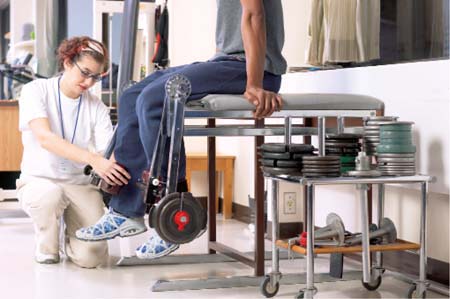
For more information, see Running Injuries: Treatment and Prevention by Hannaford and Galloway, available at www.jeffgalloway.com
Quick treatment tips
For all injuries:
Read the section on TMS on chapter 10.12.
Take three days off from running or any activity that could aggravate the area.
Avoid any activity that could aggravate the injury.
As you return to running, stay below the threshold of further irritation with much more liberal walking.
Don’t stretch. Stretching keeps most injuries from healing. Iliotibial stretches, however, can sometimes allow for running when the IT band tightens up.
Muscle injuries:
Call your doctor’s office and see if you can take prescription strength anti-inflammatory medication.
See a sports massage therapist who has worked successfully on many runners.
Tendon and foot injuries:
Rub a chunk of ice directly on the area for 15 minutes every night (keep rubbing until the area gets numb—about 15 minutes). Note: ice bags, or gel ice don’t seem to help in my experience.
Foot injuries sometimes are helped by a boot cast at first to let the problem start healing.
Knee injuries:
Call your doctor’s office to see if you can take prescription-strength anti-inflammatory medication.
See if you can do a little gentle walking as sometimes this helps.
Sometimes the knee straps can relieve pain; ask your doctor.
Get a shoe check to see if you are in the right shoe.
If you overpronate, an orthotic or motion-control shoe may help.
If you have internal knee pain, a glucosamine supplement may help.
If you have IT band injury, using a foam roller has helped. Roll for five minutes before bed, and, if possible, five minutes before and after a run.
Shin injuries:
Rule out a stress fracture. In this case, the pain usually gets worse as you run, but check with your doctor. If it is a stress fracture, you must stop running for (usually) at least eight weeks.
If the pain gradually goes away as you run on it, there is less worry of a stress fracture. This is probably a shin splint. If you stay below the threshold of irritating the shin muscle, you can run with shin splints as they gradually go away (check with doctor to be sure).
Take more walk breaks and run more slowly.
Starting running before the injury has healed
With most running injuries, you can continue to run even while the injury is healing. But first, you must have some time off to get the healing started. If you do this at the beginning of an injury, you will usually only need two to five days off. The longer you try to push through the problem, the more damage you produce, and the longer it will take to heal. Stay in touch with the doctor at any stage of this healing–running process, follow his or her advice, and use your best judgement.
To allow for healing, once you have returned to running, stay below the threshold of further irritation. In other words, if the injury feels a little irritated when running at 2.5 miles and starts hurting a little at 3 miles, you should run no more than 2 miles. And if your run-walk ratio is 3 minutes run/1 minute walk, you should drop back to 1/1, or 30 seconds/30 seconds.
Take a day of rest between running days. With most injuries, you can crosstrain to maintain conditioning, but make sure that your injury will allow this. Again, your doctor can advise.
Best crosstraining modes to maintain your running conditioning
Before doing any of these, talk to your doctor. Most are fine for most injuries, but some run a risk of irritating the injured area and delaying the healing process. For more information on this, see the chapter on crosstraining in Galloway’s Book on Running, Second Edition. Gradually build up the crosstraining, because you have to condition those muscles gradually, too. Even walking is a great way to maintain conditioning if the injury and the doctor will allow it.
Running in the water to improve your running form
NordicTrack machines
Walking
Rowing machines
Elliptical machines
See a doctor for medical issues.
